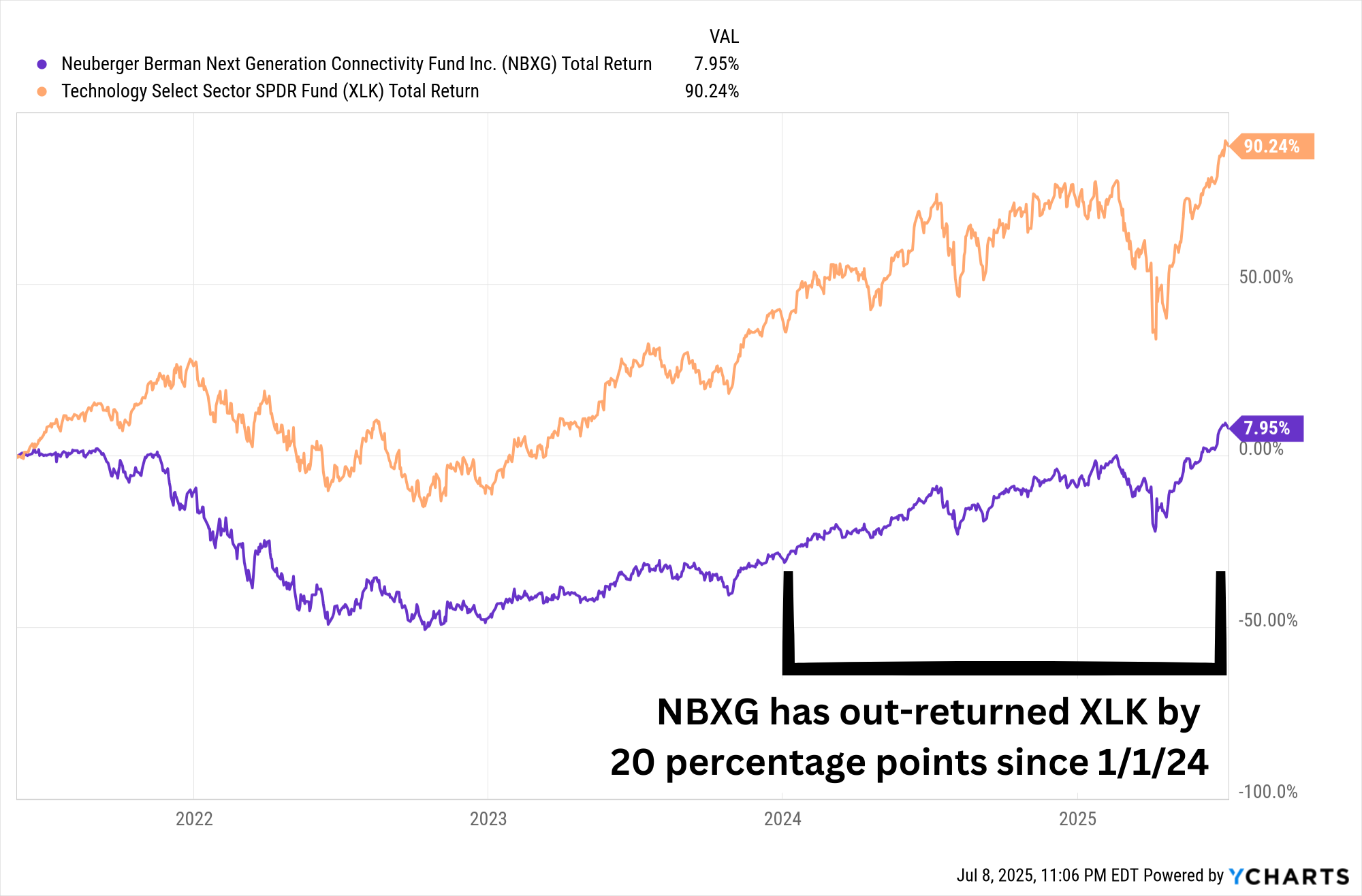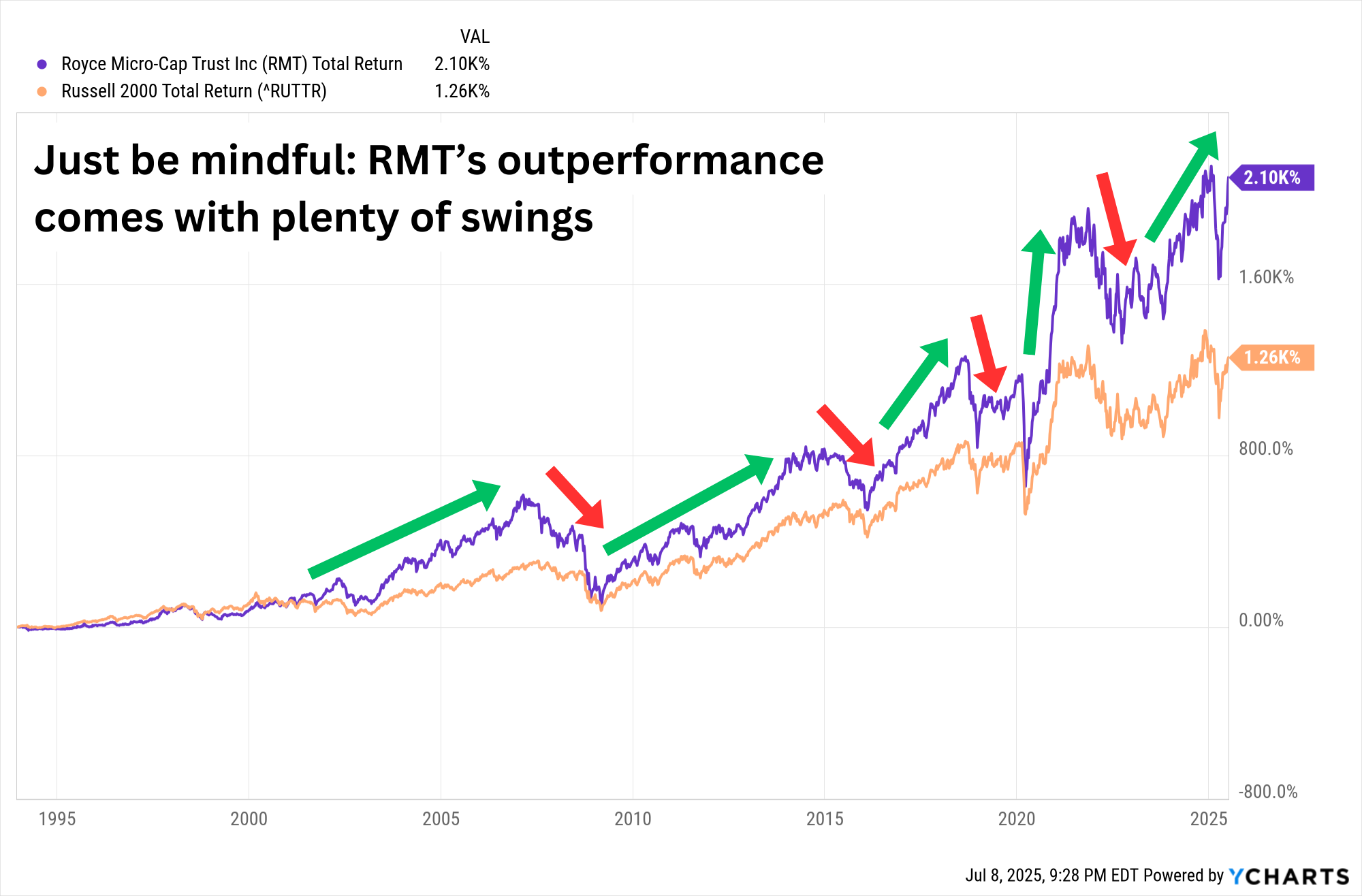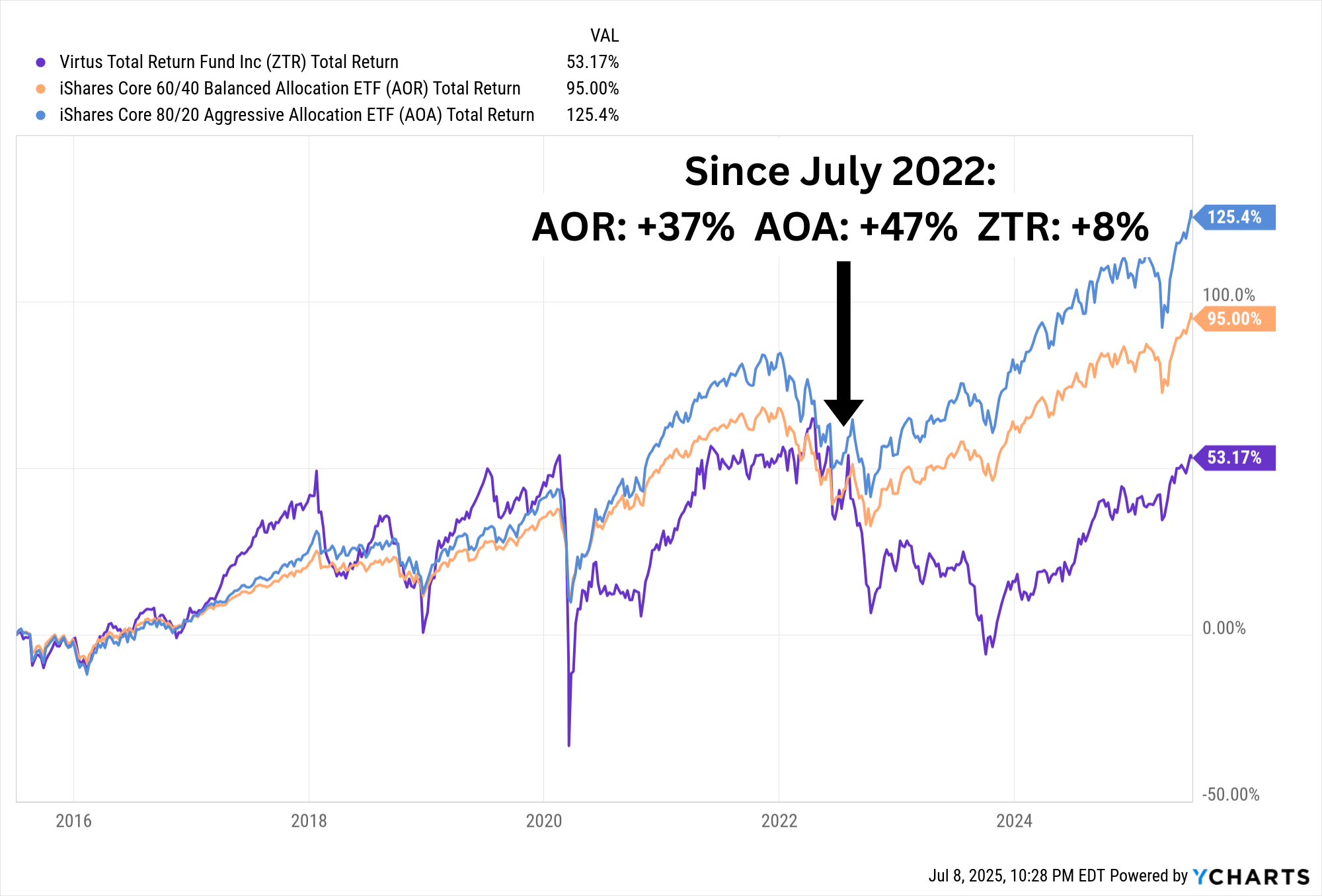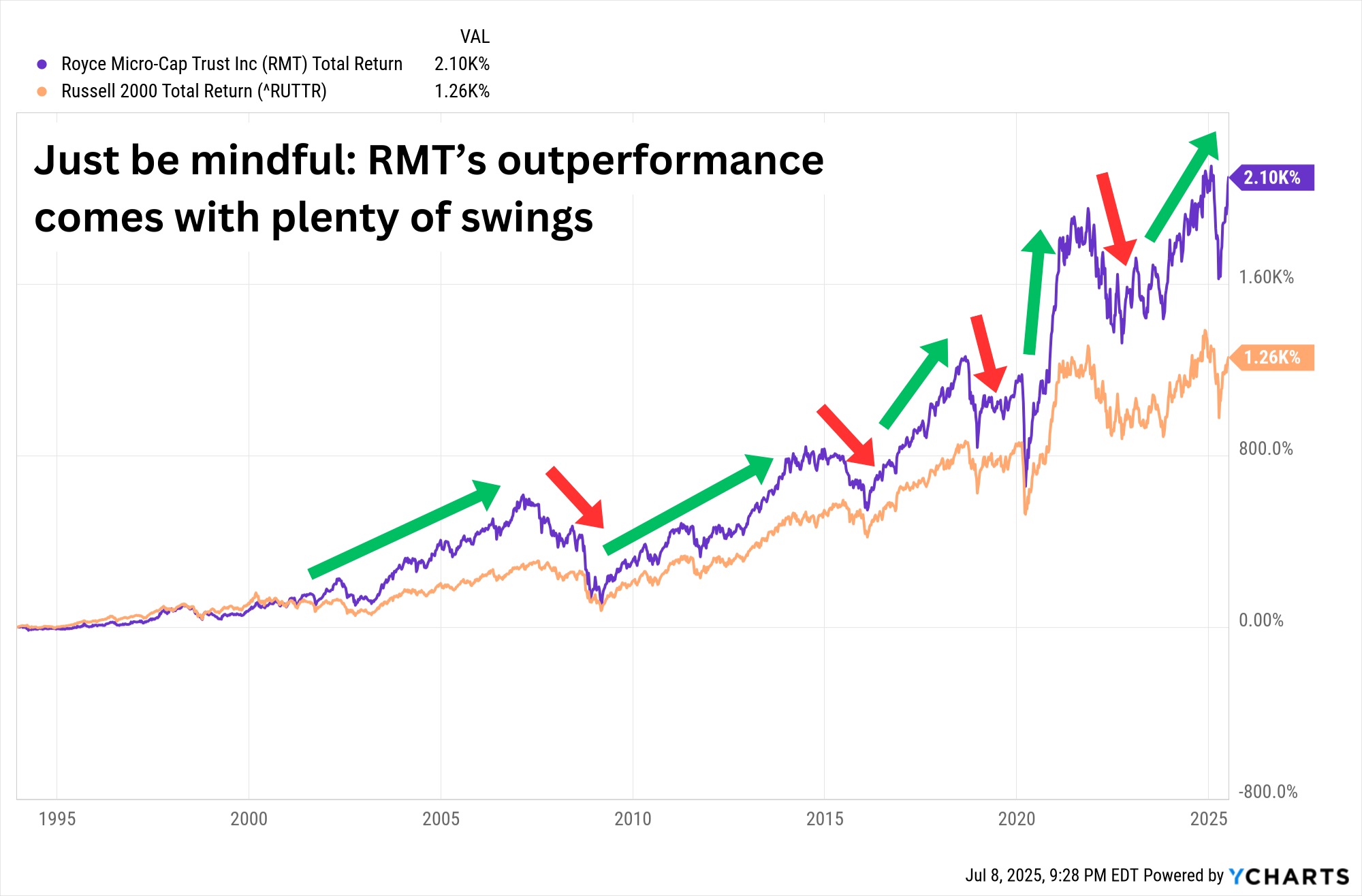The last bargains on the big board? Discounted closed-end funds (CEFs).
CEFs are often the “last stop” for dividend deals. We are talking about an inefficient corner of the income universe, which is just great for us contrarians—we love the discounts.
And these funds can trade for less than “fair value” for months and even years on end. When the markets washed out in April, these CEFs were discarded by their vanilla dividend owners. Let’s pick up the pieces for up to 12% off, or 88 cents on the . And in the process, secure yields up to 9.7%.
1. Nuveen Dow 30 Dynamic Overwrite Fund (DIAX)
Distribution Rate: 8.4%
We’ll start with the Nuveen Dow 30 Dynamic Overwrite Fund (NYSE:), an example of a strategy that thrives in CEF land: covered calls.
DIAX’s five fund managers attempt to replicate the performance of the , but with less volatility, by owning the DJIA’s components while also selling call options on between 35% and 75% of the notional value of the equity portfolio.
Covered-call funds generally offer the exact same tradeoff: Receive lower volatility and a higher percentage of returns coming from distributions in exchange for lesser overall performance than the underlying index (because DIAX’s holdings are being “called away” as they rise). Unfortunately, in the case of DIAX, the underperformance is stark, even when considering a distribution rate that’s more than 5x the Dow’s dividend yield.
DIAX’s Juicy Distribution Is Nice. Getting Lapped by the Dow Isn’t.
We’re generally better off buying funds like DIAX when we think the Dow is toppy. The fund trades at an 11% discount as I write, more than its recent average of 9%.
2. Neuberger Berman Next Generation Connectivity Fund
Distribution Rate: 8.3%
Numerous CEFs turn income-unfriendly segments of the market into distribution funnels. Take the Neuberger Berman Next Generation Connectivity Fund (NYSE:), which generates an 8%-plus monthly payout from a few dozen technology, communications, and consumer stocks.
While thematic ETFs are a dime a dozen, thematic CEFs like NBXG are few and far between. This Neuberger fund’s theme is next-generation connectivity; managers Hari Ramanan, Yan Taw Boon, and Timothy Creedom seek out stocks that “demonstrate significant growth potential from the development, advancement, use or sale of products, processes or services related to the fifth generation mobile network and future generations of mobile network connectivity and technology.”
But if we take a quick look, it’s pretty apparent NBXG can also stand in as a play on artificial intelligence (AI). Mag 7 holdings such as Meta Platforms (NASDAQ:), Amazon (NASDAQ:), Alphabet (NASDAQ:) and Nvidia (NASDAQ:) are pretty direct plays on AI at this point. The fund even invests in private companies, such as AI-powered Grammarly. It also engages in options trading to generate gains from options premiums and tamp down on risk.
Neuberger’s CEF has trailed the tech sector since inception, though that’s not a terribly fair comparison given its exposure to other sectors. Still, this strategy has shown a lot of promise over the past 18 months or so:
NBXG Has Been Holding Its Own of Late
The fund’s discount to NAV is generous, at 11.2% currently, so we have NBXG’s assets selling for 89 cents on the dollar..)
3. Royce Micro-Cap Trust (RMT)
Distribution Rate: 7.5%
Another place we might not expect a high-single-digit yield? Small-cap stocks. But that’s exactly what we get from Royce Micro-Cap Trust (NYSE:).
RMT—managed by Jim Stoeffel and Andrew Palen—is a micro-cap value fund in name, though given an average market cap of about $750 million, it’s truly closer to small-cap in nature. Still, not exactly a who’s who of ballyhooed dividend names. Holdings include the likes of electronic component maker Bel Fuse (NASDAQ:), which pays a fractional yield, and online advertising firm Magnite (NASDAQ:), which pays no dividend whatsoever.
So, what’s with the big distribution? RMT doesn’t really trade options, nor does it use debt leverage. Instead, it’s just a quarterly distribution of predominantly long-term capital gains.
Not ideal, but RMT pulls it off.
Royce Is Ripping Past the Russell
I’ve previously pointed out that RMT always trades at a discount, and indeed, it’s trading right around its five-year average discount to NAV (12%). That’s not exactly a good thing—ideally, management should have a plan to close that discount at some point. But it’s hard to knock Royce too much, given RMT’s consistent outperformance.
4. Virtus Total Return Fund (ZTR)
Distribution Rate: 9.7%
Virtus Total Return Fund (NYSE:) is a “portfolio in a can,” capable of investing in stocks and a wide array of bonds and other fixed income, both domestically and internationally.
ZTR’s four-manager team has currently built a 75/25 stock/bond portfolio. The equity sleeve is both lopsided and defensive in nature; half of its weight is in utilities, while the rest is largely taken up by industrials and energy firms. On the debt side, ZTR owns investment-grade and junk corporates, emerging-market bonds, asset-backed securities, mortgage-backed securities, bank loans, Treasuries, and more.
Like many closed-end funds (but unlike the CEFs above), ZTR amplifies its bets through debt; it currently has 130% of its assets invested thanks to debt leverage.
Virtus Total Return is considered a “moderate allocation” fund, which refers to funds that typically have between 50% and 70% of their assets invested in stocks (with the rest in bonds and/or cash). While this CEF currently has a 75/25 blend, I’ve seen it as low as 60/40 when looking at it in the past. Still, for comparison’s sake, it’s worth looking at ZTR against a couple of different allocation benchmarks—in this case, a 60/40 ETF and a more aggressive 80/20 ETF.
Unfortunately, VTR Doesn’t Look Great Against Either Fund
Virtus’ fund has enjoyed pockets of outperformance in the past, but the fund has lost an enormous amount of ground recently. Its dips have been harsher than the plain-vanilla ETFs, which is normal for a leveraged CEF, but its recoveries have been more muted—the opposite of what we’d expect.
Unfortunately, that blunts the appeal of ZTR’s nearly 10% distribution (paid monthly), as well as a roughly 11% discount to NAV that’s cheaper than its five-year average (8%).
5. Calamos Global Dynamic Income Fund (CHW)
Distribution Rate: 8.4%
Calamos Global Dynamic Income Fund (NASDAQ:) is a global fund that can invest not just in common stock, but investment-grade corporates, junk corporates, preferred stock, bank loans, convertible debt, asset-backed securities, US government securities, options, and more. At the moment, about two-thirds of assets are invested in common stock, with another 15% in convertibles, 10% in corporate debt, and the rest scattered around the other categories.
Geographically speaking, the US accounts for a little more than half of the fund’s assets, with the rest in developed markets like Germany, Japan, and Canada, as well as emerging markets like China and India.
On top of all of that, CHW’s five-manager team also utilizes a hefty amount of debt leverage: just south of 30% currently.
There aren’t many global allocation funds out there, and those that are simply aren’t built the way CHW is—especially given that management has a long leash and a lot of assets they can explore. But comparisons against the SPDR SSGA Global Allocation ETF (NYSE:)—an ETF in the same category (global moderate allocation)—are favorable, albeit bumpier.
CHW Delivers Periods of Massive Outperformance, But We Have to Pick Our Spots
CHW is also trading at a tasty 10.7% discount to NAV that’s more than twice as deep as its five-year average, and it’s doling out an 8%+ distribution, paid monthly.
Disclosure: Brett Owens and Michael Foster are contrarian income investors who look for undervalued stocks/funds across the U.S. markets. Click here to learn how to profit from their strategies in the latest report, “7 Great Dividend Growth Stocks for a Secure Retirement.”





